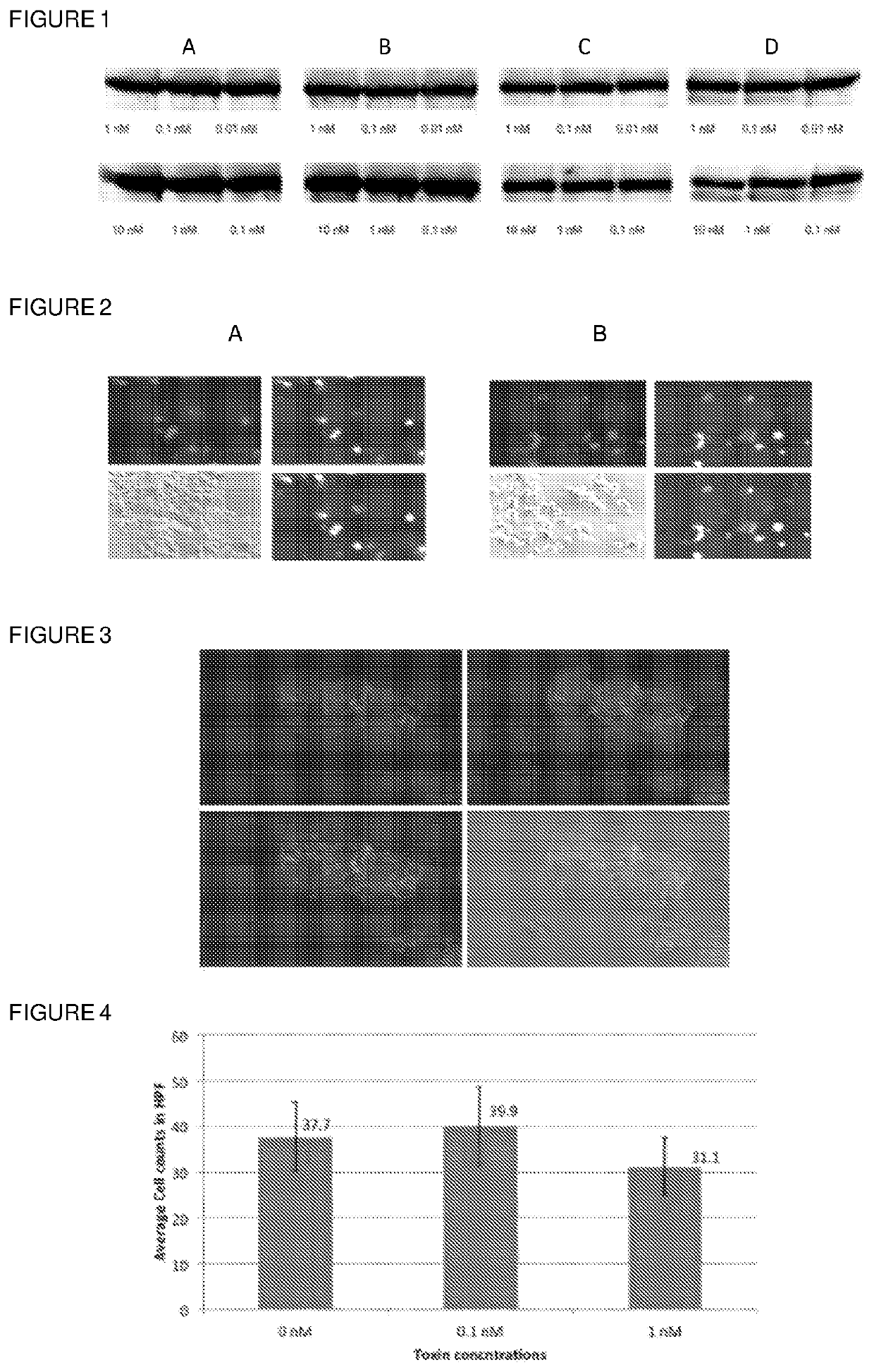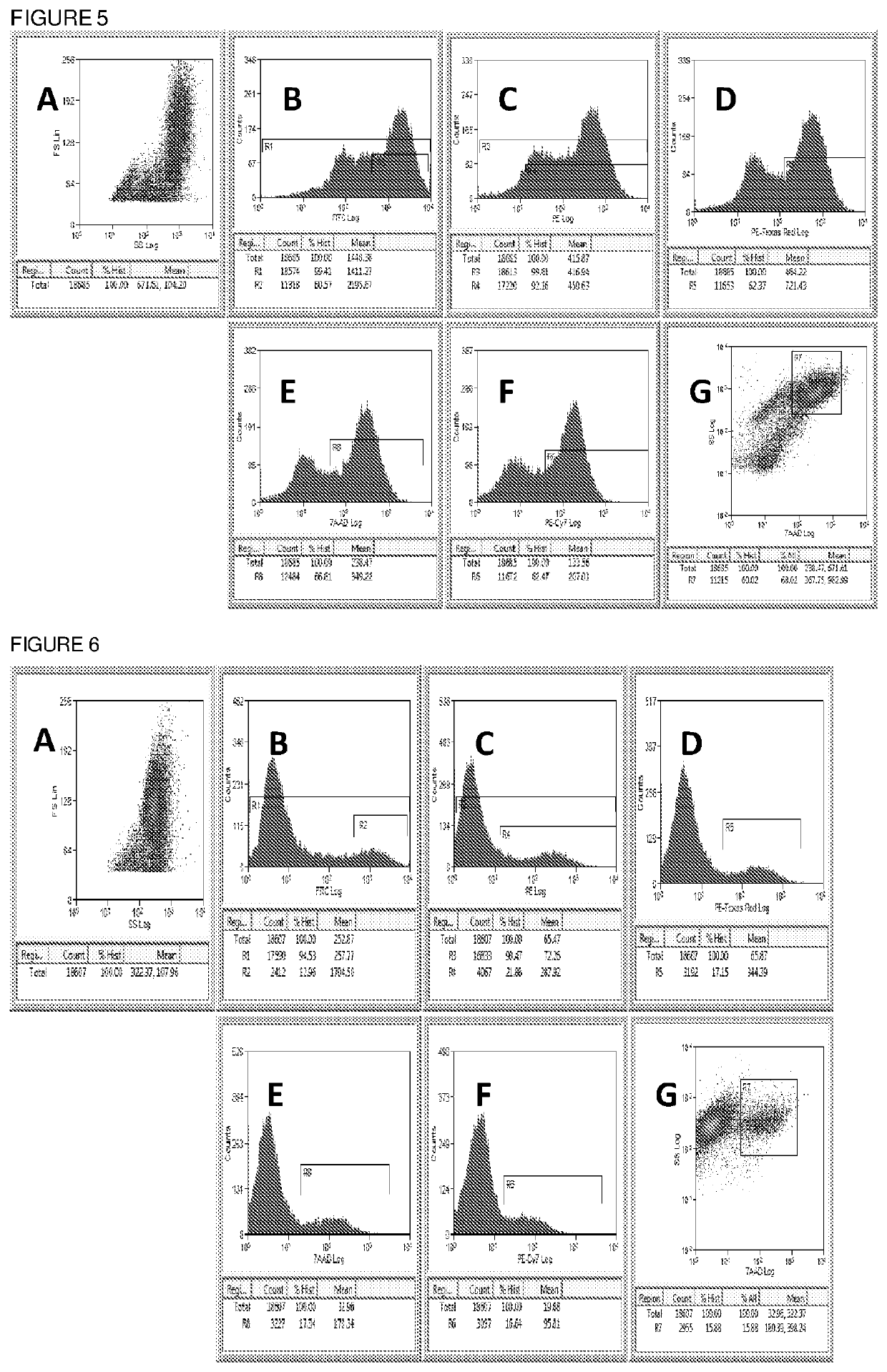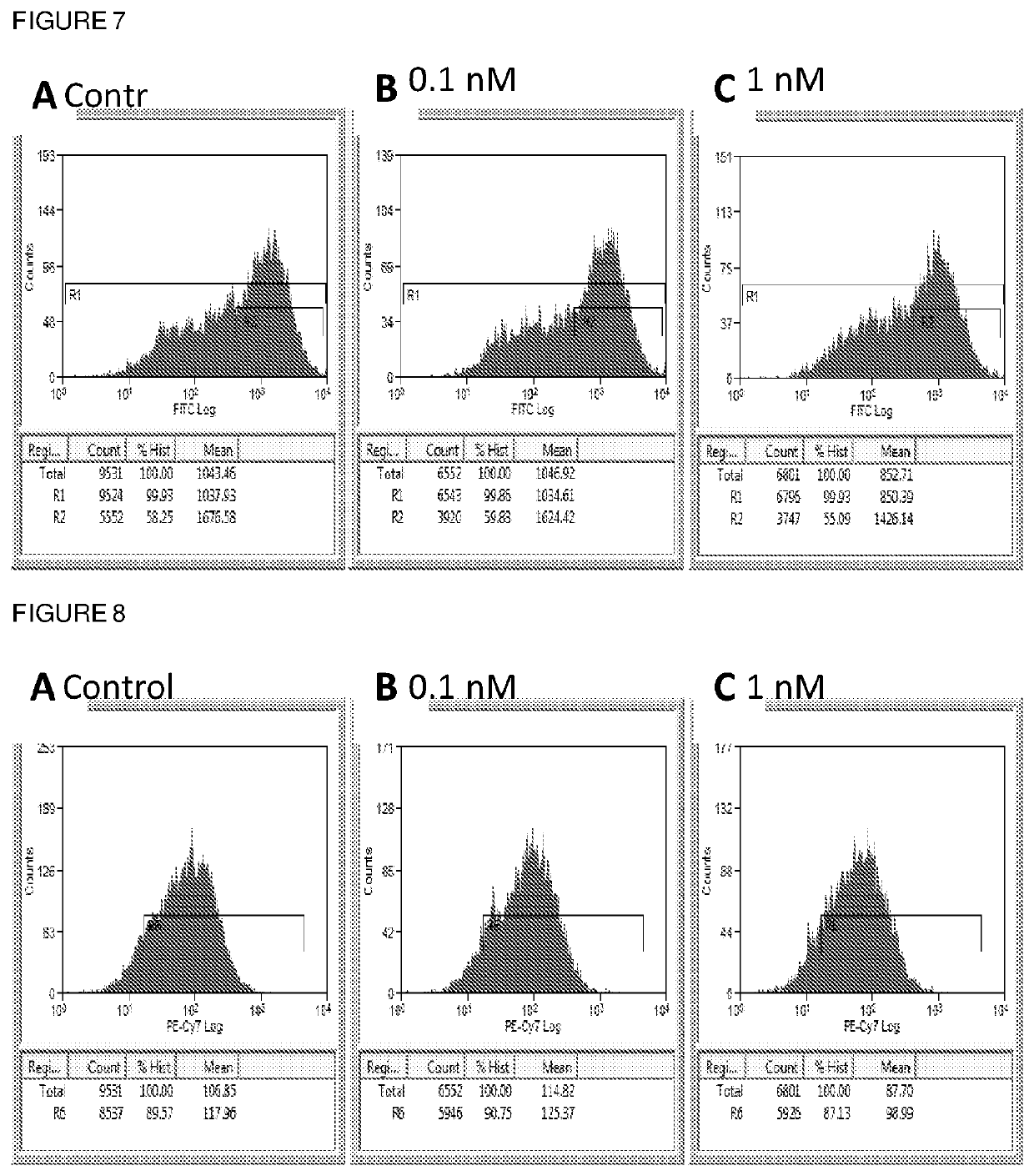Genetically Engineered Cells Sensitive for Clostridial Neurotoxins
a neurotoxin and genetic engineering technology, applied in the field of genetic engineering cells sensitive to clostridial neurotoxins, can solve the problems of affecting the desired snare protein-cleaving property of neurotoxin
- Summary
- Abstract
- Description
- Claims
- Application Information
AI Technical Summary
Benefits of technology
Problems solved by technology
Method used
Image
Examples
example 1
of Optimum Parental Cell Line for Creation of Indicator Cell Line
[0210]Neuro2A (N2a; ATCC CCL-131), BE(2)-M17 (M17; ATCC CRL-2267), IMR-32 (ATCC CCL-127), and NG108-15 [108CC15] (ATCC HB-12317) cells were studied for the purpose of choosing the optimum parental cell line for the development of the stable transfected cell line.
[0211]Upon delivery, the cells were allowed to recover and grow. Stocks of the cells were then frozen down and stored in liquid nitrogen. Once sufficient vials of cell stocks were made, the cells were assayed for their sensitivity to BoNT / A.
[0212]The cells were cultured in media containing BoNT / A (Metabiologics, Inc.) for 8 or 24 hours. The cells cultured for 8 hours were cultured in media containing 0.1 nM, 1 nM, or 10 nM BoNT / A. The cells cultured for 24 hours were cultured in media containing 1 nM, 0.1 nM, or 0.01 nM BoNT / A.
[0213]Cleavage of endogenous SNAP-25 was analyzed by Western blot using an anti-SNAP-25 antibody (Sigma #S9684) with standard protocols ...
example 2
ion of Cells with Plasmid Containing Indicator Construct
[0214]The sensitivities of NG108 cells and M17 cells to puromycin (InvivoGen #ANT-PR) and G418 (VWR #97064-358) were determined. The cells were grown to ˜50% confluency and then cultured with various concentrations of puromycin and G418. Both cell lines showed similar sensitivity to puromycin and G418.
[0215]Plasmids (pD2500; Atum) were engineered to contain nucleic acid sequences encoding puromycin-N-acetyltransferase (PuroR), a chimeric protein, and a 2A self-cleaving peptide. In the expressed product, the 2A self-cleaving peptide was located between PuroR and the chimeric protein. The chimeric protein contained SNAP-25 flanked between N-terminal and C-terminal fluorescent proteins and luciferase (located at the C-terminus). PuroR conferred resistance to puromycin. Luciferase allowed for luminescent measurements of degradation in addition to the fluorescent-based measurements of degradation facilitated by the fluorescence prot...
example 3
ion of Cleavage of Indicator Protein
[0222]Plasmids (pcDNA3.1) were engineered to contain SEQ ID NO: 3 which encodes the BoNT / A light chain, CFP, and an N-terminal SBP tag. The nucleic acid encoding the BoNT / A light chain was synthesized using DNA2.0 (Atum).
[0223]Cells from Example 2 stably transfected with the indicator constructs (mScarlet-SNAP25-GeNluc or mScarlet-SNAP25-CyanNluc) were transiently transfected with an expression vector containing the CFP-BoNT / A construct. Numerous red but not green or cyan cells were demonstrated at 24 and 48 after transfection, indicating that the indicator protein was cleaved and the C-terminal fragment rapidly degraded.
PUM
| Property | Measurement | Unit |
|---|---|---|
| molecular mass | aaaaa | aaaaa |
| molecular mass | aaaaa | aaaaa |
| wavelengths | aaaaa | aaaaa |
Abstract
Description
Claims
Application Information
 Login to View More
Login to View More - R&D
- Intellectual Property
- Life Sciences
- Materials
- Tech Scout
- Unparalleled Data Quality
- Higher Quality Content
- 60% Fewer Hallucinations
Browse by: Latest US Patents, China's latest patents, Technical Efficacy Thesaurus, Application Domain, Technology Topic, Popular Technical Reports.
© 2025 PatSnap. All rights reserved.Legal|Privacy policy|Modern Slavery Act Transparency Statement|Sitemap|About US| Contact US: help@patsnap.com



